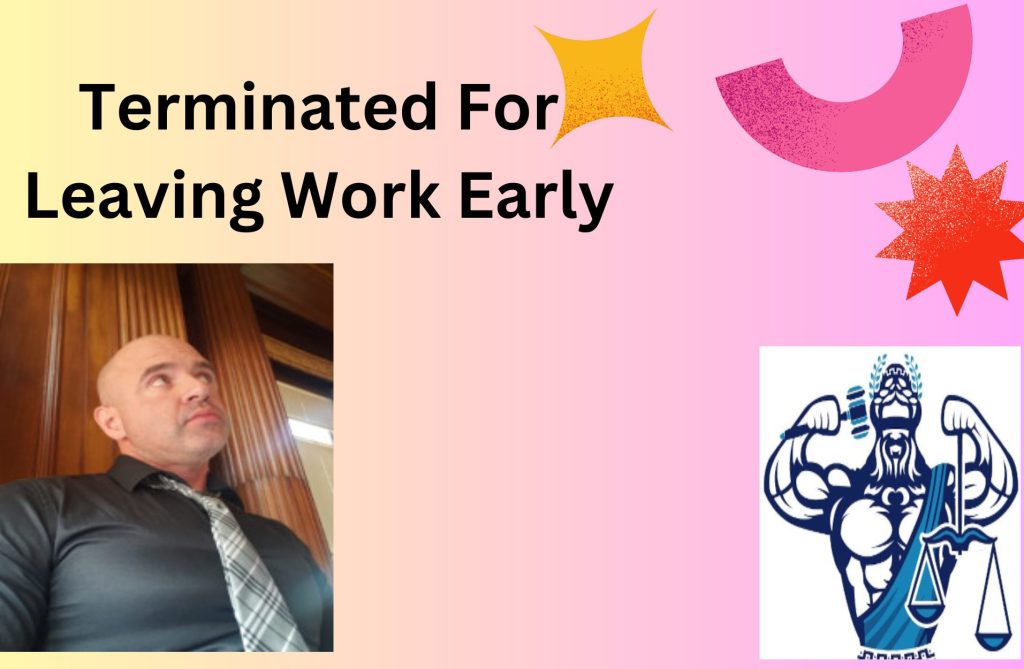Here at the Law Office of Vincent Miletti, Esq. and the home of the #UnusuallyMotivated movement, we take pride as a resilient and dependable legal services firm, providing such services in both a traditional and online, web-based environment. With mastered specialization in areas such as Employment and Labor Law, Intellectual Property (IP) (trademark, copyright, patent), Entertainment Law, and e-Commerce (Supply Chain, Distribution, Fulfillment, Standard Legal & Regulatory), we provide a range of legal services including, but not limited to traditional legal representation (litigation, mediation, arbitration, opinion letters, and advisory), non-litigated business legal representation and legal counsel, and unique, online legal services such as smart forms, mobile training, legal marketing, and development.
Still, here at Miletti Law®, we feel obligated to enlighten, educate, and create awareness about how these issues and many others affect our unusually motivated® readers and/or their businesses. Accordingly, to achieve this goal, we have committed ourselves to create authoritative, trustworthy, & distinctive content. Usually, this content is featured as videos posted on our YouTube Channel https://www.youtube.com/channel/UCtvUryqkkMAJLwrLu2BBt6w and blogs that are published on our website WWW.MILETTILAW.COM. With that, the ball is in your court and you have an effortless obligation to subscribe to the channel and sign up for the Newsletter on the website, which encompasses the best way to ensure that you stay in the loop and feel the positive impact of the knowledge bombs that we drop here!
As the authoritative force in Employment Law, it only seemed right to introduce one of the many upcoming series where we remain persistent in introducing a variety of topics, which will look to not only educate but also deliver in a sense that only Miletti Law® can. In this regard, this blog is Part II of our new miniseries on the “Fundamentals of Trademarks,” where a number of upcoming blogs will be dedicated to exploring trademarks in detail & depth. In Part I, we hammered on the basics of trademarks in our blog titled “Trademarks 101 – A Primer Course” and mentioned that a trademark, which is considered eligible for protection under the law, is typically a design, symbol, phrase, image, and/or word used as a source identifier for a given product. We also added that, in fact, a trademark could be a combination of any or all of these things.
Trademark Protection Requirements; Considering the Five Categories of the Spectrum Of Distinctiveness
In the previous blog under this series, we mentioned that a mark must be “distinctive” for it to be enforceable against a confusingly similar one adopted by another entity or party. The attribute of “distinctive” makes the purported mark to be protectable under trademark law. If a mark helps a consumer’s mind identify the source of a service or product, it is described as a distinctive mark.
Arguably, the level where a mark falls on the spectrum of distinctiveness determines its “strength” or level of distinctiveness. There are five categories of the spectrum of distinctiveness. These are – fanciful, arbitrary, suggestive, descriptive, and generic. However, the analysis of product packaging or what is known as “trade dress” is technically different in light of this spectrum of distinctiveness.
Fanciful Marks
Under the trademark law, a fanciful mark is, by description, a made-up word. A perfect example is “KODAK,” which is just a short and catchy phrase that consumers find easy to remember and associate with the photography company. It is interesting to note that while fanciful marks are entitled to the broadest protection, they are inherently distinctive and, accordingly, the strongest marks along the spectrum of distinctiveness.
Arbitrary Marks
Unlike the fanciful marks, an arbitrary mark is a real term, such as “APPLE” for computers. However, as you would easily note, the way the computer firm uses the word APPLE is nowhere close to the common meaning. Just like fanciful marks, arbitrary marks are also entitled to the broadest protection because they are inherently distinctive and, accordingly, the strongest marks along the spectrum.
Suggestive Marks
While they do not actually describe a given characteristic, suggestive marks evoke a service or product’s attribute. These marks are used such that in order determine the nature of the service or good, consumers must engage their thought and exercise imagination. Perfect examples include “NETFLIX” for streaming services & “AIRBUS” for airplanes. Similarly, suggestive marks are protectable because, although weak, they are regarded as inherently distinctive. However, while third parties may be permitted to adopt similar marks for associated goods and/or services, they are not entitled to a broad scope of protection.
Descriptive Marks
As opposed to describing a product or service’s “source,” a descriptive mark merely describes an attribute or even the product or service itself. For example, the term “SPEEDY” could be used to describe a delivery service. However, one thing to note is that the question concerning the need for describing products or services by competitors is a key test for descriptiveness, especially in the case of a word mark. As you would expect, while they do not qualify for instant protection under trademark law, descriptive marks are not considered inherently distinctive. However, it is possible for a mark to attain “secondary meaning” or distinctiveness as a result of actual use in business. Accordingly, an array of relevant factors must be considered when determining whether a mark has attained descriptiveness, particularly if another party copies or adopts a similar mark. Such factors include, but are not limited to the intent in copying the mark, direct consumer testimony, consumer survey evidence, the marks’ nature of use in magazines & newspapers, manner and extent of advertising incorporating the mark, the volume of sales under the mark, and exclusivity, nature, and length of the mark’s usage.
Pursuant to 15 U.S.C. § 1052(f), as prima facie evidence for use in court, a plaintiff may convince the court that a mark has attained distinctiveness if such a mark has been used continuously and exclusively for at least 5 years. Although considered weak, a descriptive mark would be protectable under the trademark if a court finds that it has acquired distinctiveness.
Another notable aspect is that marks may be descriptive based on where they are geographically associated. For example, while “LEELANAU WINE” is geographically descriptive for wine made on Michigan’s Leelanau Peninsula, “AMERICAN AIRLINES” is geographically descriptive for airline services within America.
Courts have used the term “hazy” to describe the border between suggestive & descriptive marks. Accordingly, they use a double test when evaluating the category a mark falls into; (1) third-party use test and (2) imagination test.
Generic Terms/Marks
Technically, a generic term does not identify the source of a given service or product. Rather, it merely identifies a common service or product and, therefore, is not protectable under the trademark law. It, thus, goes without saying that manufacturers should be entitled and granted the right to call their services or products by name. For instance, if a company that makes bread products uses the generic term “BREAD” for a specific bread product, a third party cannot make trademark right claims on this generic term.
In Part III of this miniseries and another critical update on the content we have already published pertaining to trademarks, we shall move the discussion forward by hammering on “Trademark Law on Trade Dress (Product Packaging).”
Stay tuned for more legal guidance, training, and education. In the interim, if there are any questions or comments, please let us know at the Contact Us page!
Always rising above the bar,
Isaac T.,
Legal Writer & Author.
 Professional Legal & Business Services And Representation - English & Espanol!
Professional Legal & Business Services And Representation - English & Espanol!

 314-648-2586
314-648-2586 CALL US NOW
CALL US NOW








